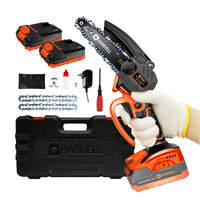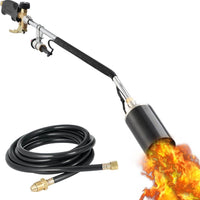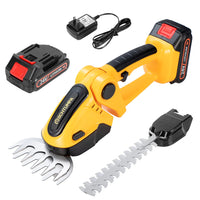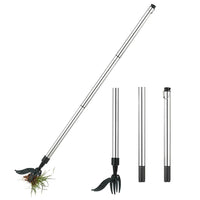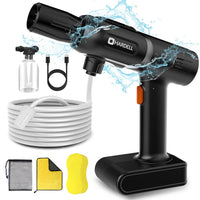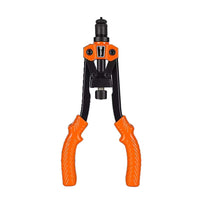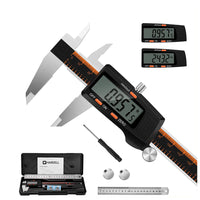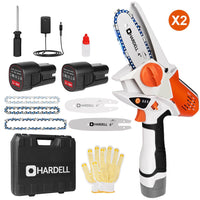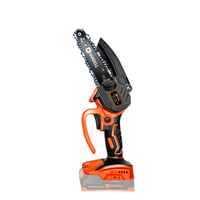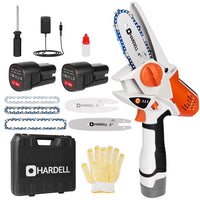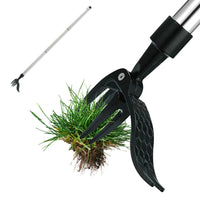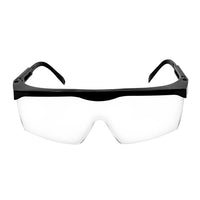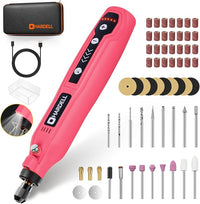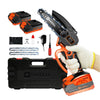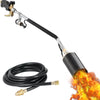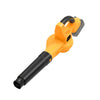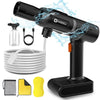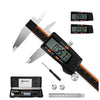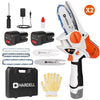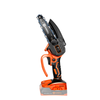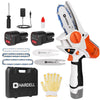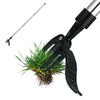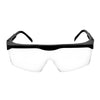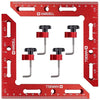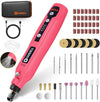Rotary Tool Vs. Oscillating Tool: Understanding The Differences And Best Uses

When it comes to DIY projects and home renovation, having the right tools is essential. Two of the most popular multi-functional tools are rotary tools and oscillating tools.
Both offer a wide range of uses, but they have distinct differences that make them suitable for different types of tasks.
In this article, we’ll discuss the differences between these two versatile tools and when you should use each one. By understanding their capabilities and limitations, you can choose the best tool for your project and get great results every time!
What Is A Rotary Tool?
A rotary tool is a versatile handheld power tool that features a high-speed rotating cutting bit. It is typically powered by an electric motor, although some models are battery-operated. The rotary tool's small size makes it ideal for intricate detailed, or precision cuts, engraving, drilling, grinding, polishing, and sanding.
Rotary tools are very useful for a wide range of applications, including woodworking, metalworking, jewelry making, and crafting. They can also be used to sharpen knives, scissors, and various other cutting blades.
What Is An Oscillating Tool?

An oscillating tool is a handheld power tool that features an oscillating blade or cutting bit. It is usually powered by an electric motor, but some models are cordless and battery-operated.
Oscillating tools are designed for more heavy-duty cutting tasks such as sawing through wood, metal, and plastic. They can also be used to remove grout from between tiles and cut through old nails or screws.
Rotary Tools: Features, Advantages, And Limitations
Rotary tools are essential tools for a variety of DIY and home renovation projects. They offer the precision needed for intricately detailed work and can be used for a wide range of tasks, including engraving, drilling, grinding, polishing, and sanding.
Features
Rotary tools feature a high-speed rotating cutting bit that is powered by an electric motor. They are small and lightweight, making them easy to maneuver, and great for intricate detailed or precision cuts, engraving, drilling, grinding, polishing, and sanding.
The small size of these tools also makes them ideal for hard-to-reach areas.
This type of tool is generally very affordable and widely available in hardware stores and online. Some models come with attachments such as sanding discs and buffing pads, allowing you to do a variety of jobs with just one tool.
Advantages
One of the biggest advantages of using a rotary tool is its speed and precision. It can easily be cut through a variety of materials such as wood, metal, plastic, stone, and more with precise results.
Rotary tools also feature various attachments for different tasks, and the right accessory can make all the difference in the quality of your project.
Rotary tools are also relatively inexpensive and offer great value for their cost. They come in a wide range of sizes and shapes to suit any job at hand.
Finally, many rotary tool models are cordless which makes them very portable and convenient when working outdoors or on projects away from an outlet.
Limitations
Rotary tools are not suitable for heavy-duty tasks due to their small size and lack of power. The cutting bits also tend to wear out quickly, so it's important to have extra bits on hand. The vibration generated by the tool can cause fatigue or numbness in the hands if used for extended periods.
Lastly, rotary tools require a steady hand because even a slight jerk or slip can cause damage to the workpiece.

Oscillating Tools: Features, Advantages, And Limitations
Oscillating tools are versatile tools for a wide range of tasks, including sawing, grinding, sanding, and more. They are designed for heavy-duty cutting jobs and feature a powerful motor and oscillating blade or cutter bit that is ideal for tight spaces.
Features
Oscillating tools usually come with attachments such as sanding pads, saw blades, and grinding discs to allow you to do multiple tasks with just one tool. The oscillating motion of the blade also makes it easier to navigate tight spots without damaging the workpiece.
Many models are cordless which makes them very portable and convenient when working on projects away from an outlet.
Advantages
One of the biggest advantages of using an oscillating tool is its power and ability to make tough cuts in hard materials such as metal, wood, and plastic. The oscillating motion of the blade also helps to reduce fatigue while making precise cuts. They are designed for heavy-duty cutting tasks so they can be used virtually anywhere.
Oscillating tools are relatively inexpensive compared to other power tools and come in a variety of sizes and shapes to suit any job at hand. Many models also feature LED lights which makes them great for use in dark areas or tight spaces.
Limitations
Oscillating tools require more effort from the user since the oscillating motion means that you need to continually keep your hand steady throughout the whole process. Additionally, these types of tools are not suitable for intricate or detailed work due to their size and power.
Furthermore, the vibration generated by the tool can cause fatigue in the hands if used for extended periods. Finally, some models can be quite bulky, so they may not be ideal for small jobs.
Comparison Between Rotary And Oscillating Tools: Key Differences And Similarities
When it comes to power tools, two of the most popular options are rotary tools and oscillating tools. While these two tools may seem similar, there are some key differences that you should be aware of when choosing the right tool
Key Differences
The key differences between both tools are as follows:
Motor Power
Oscillating tools are much more powerful than rotary tools due to the motor powering them. They are capable of more heavy-duty tasks, such as cutting through hard materials like metal or plastic.
Meanwhile, rotary tools have a smaller motor and a lower power output which makes them better for lighter jobs and detailed work.
Speed
Rotary tools are much faster than oscillating tools due to their higher rpm (revolutions per minute). This makes them ideal for cutting through materials quickly or trimming edges to perfection.
On the other hand, oscillating tools usually run at a lower rpm which is better for precise cuts that require more finesse.
Size and Weight
Rotary tools tend to be smaller than oscillating ones, making them easier to maneuver in tight spaces. They are also lightweight, which makes it easy to work with one hand.
Oscillating tools, however, are heavier and bulkier - making them best suited for bigger projects or jobs that require more power.
Attachments
Both types of tools feature attachments that can be used for various tasks such as sanding, sawing, grinding, and more. However, rotary tools tend to have fewer attachments than oscillating ones due to their smaller size and power output.
This means you may need multiple different rotary tool models depending on the job at hand. In contrast, an oscillating tool can be used with multiple attachments within one model - saving time and money in the long run.
Cost
Generally speaking, rotary tools tend to be less expensive than oscillating ones due to their simpler design and lower power output. However, this does not mean that you should always choose the cheaper option; if you need a tool for heavy-duty tasks, an oscillating one is likely your best bet regardless of cost, as it will provide superior results compared to a rotary tool for the same job.
Choosing The Right Tool For Your Diy Project: Factors To Consider
When it comes to any DIY project, one of the most important decisions is choosing the right tool. Rotary and oscillating tools are both great options, but each has its specific advantages and drawbacks.
Here are some factors you should consider when choosing between the two:
Power Output
If you need a tool for heavy-duty tasks such as cutting through metal or plastic, then an oscillating tool is likely your best bet. However, rotary tools are better suited for lighter jobs or intricate detail work.
Speed and Precision
Rotary tools can cut faster than oscillating ones, so if you need to trim edges quickly or make precise cuts, then a rotary tool is your best option.
Oscillating tools, on the other hand, are better for slow and steady precision work where speed is not as important.
Size
The size and weight of the tool should be taken into consideration depending on how portable the tool needs to be.
Rotary tools tend to be smaller and lighter, which makes them easier to maneuver in tight spaces, whereas oscillating tools are heavier and bulkier - making them best suited for bigger projects or jobs that require more power.
Cost
Rotary tools usually cost less than oscillating ones, but this should not be the only factor in your decision-making. Ultimately, if you need a tool for heavy-duty tasks then an oscillating one is likely your best bet regardless of cost.
Conclusion: Making The Right Choice For Your Diy Needs
In conclusion, when it comes to choosing the right tool for your DIY project, there are many factors to consider. Rotary tools and oscillating tools each have their advantages and drawbacks depending on the job at hand.
To make sure you get the best results from your work, be sure to evaluate power output, speed, precision needs, size requirements as well as cost before making a purchase decision.
With these considerations in mind, you can ensure that whatever tool you choose is perfect for all of your DIY needs!
